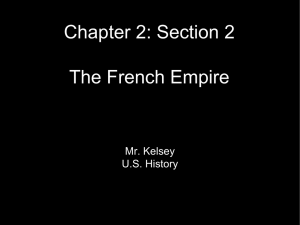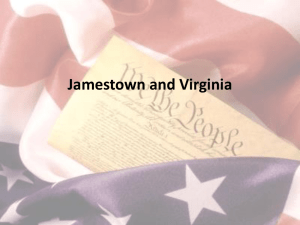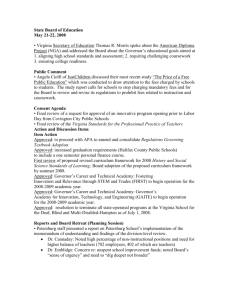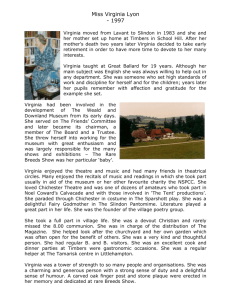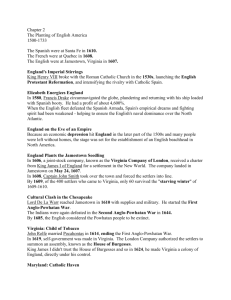The House of Burgesses Reading In 1606, James I issued a royal
advertisement
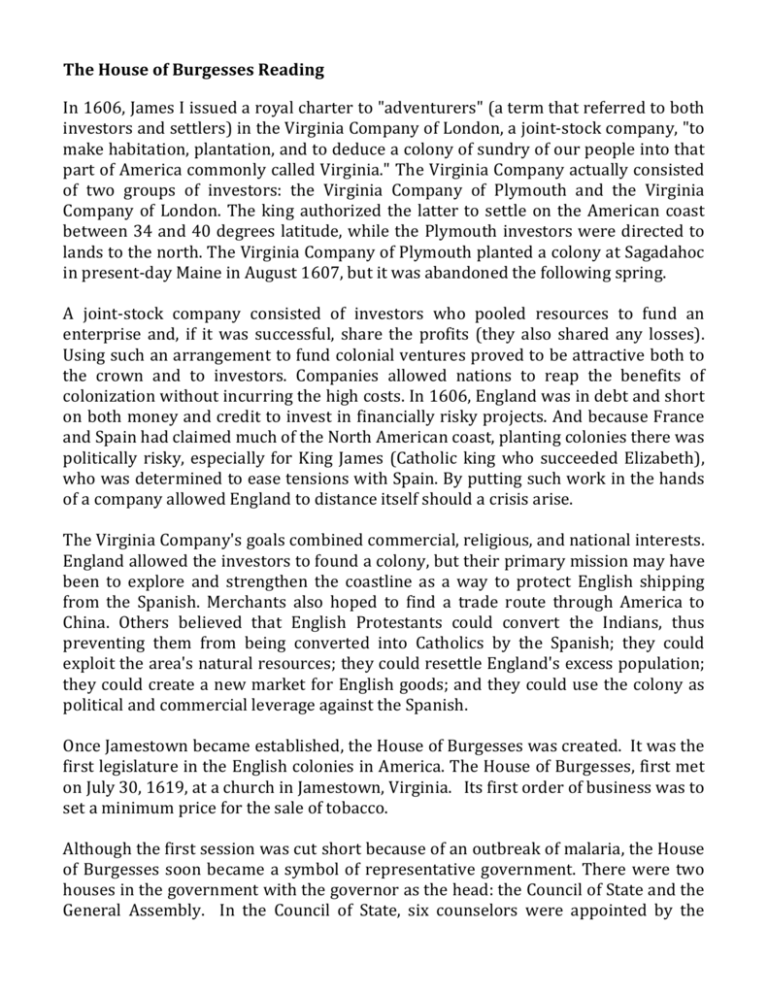
The House of Burgesses Reading In 1606, James I issued a royal charter to "adventurers" (a term that referred to both investors and settlers) in the Virginia Company of London, a joint-­‐stock company, "to make habitation, plantation, and to deduce a colony of sundry of our people into that part of America commonly called Virginia." The Virginia Company actually consisted of two groups of investors: the Virginia Company of Plymouth and the Virginia Company of London. The king authorized the latter to settle on the American coast between 34 and 40 degrees latitude, while the Plymouth investors were directed to lands to the north. The Virginia Company of Plymouth planted a colony at Sagadahoc in present-­‐day Maine in August 1607, but it was abandoned the following spring. A joint-­‐stock company consisted of investors who pooled resources to fund an enterprise and, if it was successful, share the profits (they also shared any losses). Using such an arrangement to fund colonial ventures proved to be attractive both to the crown and to investors. Companies allowed nations to reap the benefits of colonization without incurring the high costs. In 1606, England was in debt and short on both money and credit to invest in financially risky projects. And because France and Spain had claimed much of the North American coast, planting colonies there was politically risky, especially for King James (Catholic king who succeeded Elizabeth), who was determined to ease tensions with Spain. By putting such work in the hands of a company allowed England to distance itself should a crisis arise. The Virginia Company's goals combined commercial, religious, and national interests. England allowed the investors to found a colony, but their primary mission may have been to explore and strengthen the coastline as a way to protect English shipping from the Spanish. Merchants also hoped to find a trade route through America to China. Others believed that English Protestants could convert the Indians, thus preventing them from being converted into Catholics by the Spanish; they could exploit the area's natural resources; they could resettle England's excess population; they could create a new market for English goods; and they could use the colony as political and commercial leverage against the Spanish. Once Jamestown became established, the House of Burgesses was created. It was the first legislature in the English colonies in America. The House of Burgesses, first met on July 30, 1619, at a church in Jamestown, Virginia. Its first order of business was to set a minimum price for the sale of tobacco. Although the first session was cut short because of an outbreak of malaria, the House of Burgesses soon became a symbol of representative government. There were two houses in the government with the governor as the head: the Council of State and the General Assembly. In the Council of State, six counselors were appointed by the Virginia Company to serve under the governor. They were often owners in the company. The General Assembly was made up of 22 members made of land owning men over 17 who were elected by the colony as a whole. The governor originally appointed by the Virginia Company and the English monarch later. The House of Burgesses, which met at first only once a year, could make laws, which could be vetoed by the governor or the directors of the Virginia Company. This continued to be the standard until 1624, when Virginia became a royal colony. At that time, England took much more control of things in Virginia, restricting the powers of the House of Burgesses. By 1634, the General Assembly divided the Virginia colony into eight shires (later called counties) for purposes of government, administration and the judicial system. By 1643, the expanding colony had 15 counties. All of the county offices, including a board of commissioners, judges, sheriff, constable and clerks, were appointed positions. Only the members of the House of Burgesses were elected by a vote of the people. Women had no right to vote. While all free men originally were given the right to vote, by 1670 only property owners were allowed to vote.

